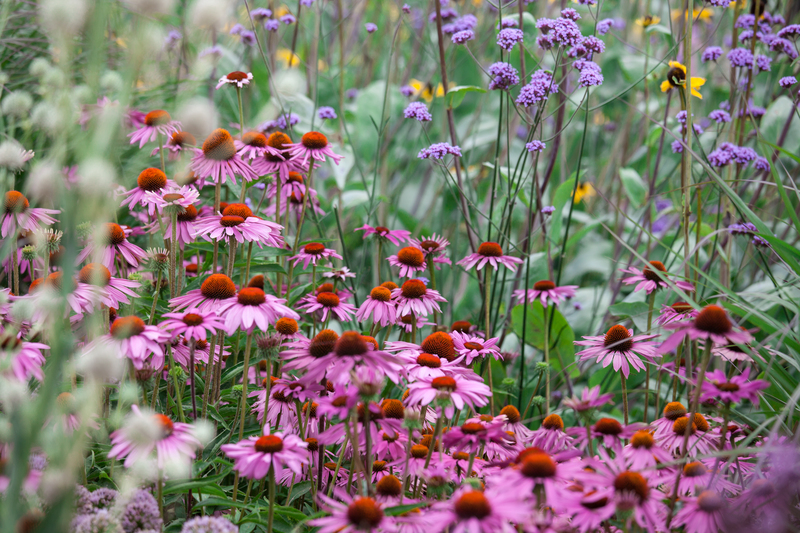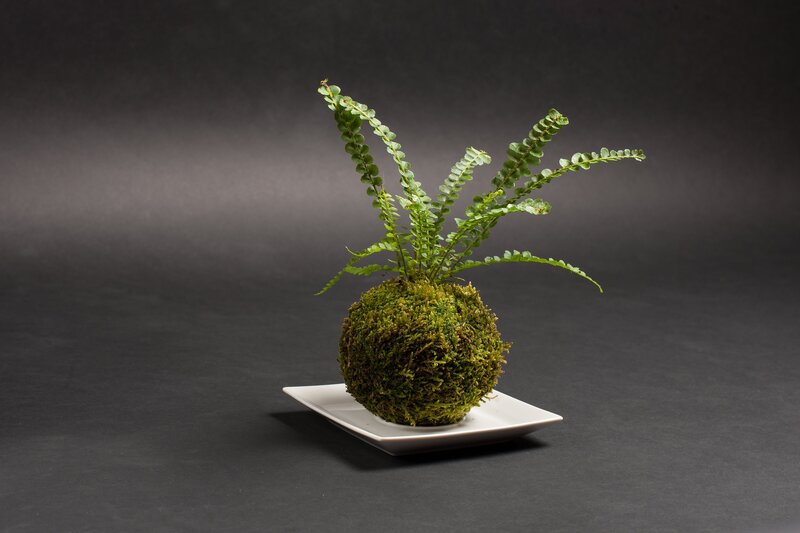Proven Methods for Flourishing Orchid Plants
Posted on 23/08/2025
Proven Methods for Flourishing Orchid Plants
Orchids are among the most exquisite and captivating flowering plants enjoyed by gardeners and indoor plant enthusiasts worldwide. While their blooms are unmatched in beauty, orchids can be somewhat mysterious for the uninitiated. Fortunately, with the right strategies, you can watch your orchid plants not just survive, but thrive and put on impressive displays year after year. In this comprehensive article, we'll uncover proven methods for flourishing orchid plants, covering everything from choosing the right species to expert maintenance tips that ensure healthy growth and mesmerizing blooms.
Understanding Orchids: A Brief Overview
Orchids belong to one of the largest and most varied plant families in the world, boasting over 25,000 naturally occurring species and countless hybrids. These graceful plants can adapt to a wide array of environments, from tropical rainforests and mountaintops to arid grasslands. However, their common denominator is their specialized growing needs.
- Epiphytic Orchids (such as Phalaenopsis and Cattleya) grow on trees in nature, relying on high humidity and indirect light.
- Terrestrial Orchids (like Paphiopedilum) grow in soil, often in leaf litter on the forest floor.
Knowing the origin of your orchid species is fundamental to letting your plant flourish, as it determines its preferred orchid care routine.

Choosing the Right Orchid Variety for Your Conditions
Not all orchids are created equal, especially when it comes to ease of care. If you're a beginner, opt for more forgiving varieties before progressing to challenging ones. Here are some popular types and their requirements:
Best Orchid Varieties for Beginners
- Phalaenopsis (Moth Orchid): Adaptable and available in many colors. Prefers bright, indirect light and moderate humidity.
- Dendrobium: Thrives with ample light and modest watering habits.
- Paphiopedilum (Slipper Orchid): Loves cooler temps and lower light; requires consistent soil moisture.
- Cattleya: Known for large, fragrant blooms; likes high light and quick-drying potting media.
Pro tip: Assess your indoor conditions (light, temperature, and humidity) before selecting your orchid. The closer you can mimic their native habitat, the more likely your orchid will flourish.
Essential Care Tips for Flourishing Orchid Plants
Successfully growing orchids means understanding their unique requirements. Here are proven strategies to help your orchid thrive:
1. Provide Optimal Light Conditions
- Bright, indirect light is key. Place orchids near east or south-facing windows, or use sheer curtains to diffuse sunlight.
- Too much direct sun can scorch leaves, while insufficient light leads to poor blooming and weak growth.
- Leaf color offers clues: Healthy leaves are medium green. Dark green suggests not enough light, while yellow-green can mean too much.
2. Watering With Care
- Overwatering is the number one reason orchids fail to flourish. Let the potting medium almost dry out between watering.
- How often should you water orchids? This depends on variety, pot material, humidity, and season. Usually, once a week suffices.
- Water in the morning, using tepid water. Avoid letting the orchid sit in standing water, which can cause root rot.
- Observe the roots. Silvery roots mean it's time to water; green roots do not need more moisture.
3. Humidity and Airflow Essentials
- Most orchids flourish in 40% to 70% humidity. Indoor air is often drier, especially in winter.
- Use a humidity tray or a room humidifier. Grouping orchids together can also raise local humidity.
- Good air movement is crucial to prevent fungal diseases. A gentle fan or open window will suffice--make sure it isn't blowing directly on the plant.
4. Proper Temperature Awareness
- Most orchids thrive between 65-80?F (18-27?C) during the day and 55-65?F (13-18?C) at night.
- A slight nighttime temperature drop helps many orchids to set buds and flower.
- Protect from drafts, heater vents, and sudden temperature swings, which can stress the plant.
5. Specialized Orchid Potting Mix and Containers
- Never use regular potting soil for orchids! Use a mix made primarily of bark, sphagnum moss, or coconut husk chips that allows fast drainage and good aeration.
- Repot every 1-2 years, or when the potting mix breaks down and becomes compacted.
- Choose pots with drainage holes and, if possible, transparent orchid pots to monitor root health.
6. Nutritional Needs: Fertilization Know-How
- Orchids require less fertilizer than most plants. Use a balanced, water-soluble orchid fertilizer (20-20-20) at quarter or half strength.
- Fertilize "weakly, weekly." More orchids are harmed by overfeeding than underfeeding.
- Flush the pot with plain water monthly to prevent salt buildup, which can hurt roots.
Encouraging Reblooming and Prolonging Flower Life
One of the primary joys of orchid growing is encouraging your plants to bloom again and again. Here's how to ensure robust flowering:
Proper Light and Temperature Manipulation
- Many orchids, especially Phalaenopsis, require a cool period to initiate spikes. Lower temperatures in autumn can trigger blooming cycles.
- Sufficient daylight is critical--consider supplemental grow lights if natural light is inadequate, especially in winter.
Post-Bloom Care
- After flowers fade, don't immediately remove flower spikes. For Phalaenopsis, cut the spike just above a node to possibly encourage a secondary bloom.
- Feed and maintain the plant as usual. Rest periods are common between blooming cycles.
Common Orchid Growing Mistakes (And How to Avoid Them)
Even devoted growers can run into trouble. Steer clear of these pitfalls to keep your orchids flourishing:
- Overwatering: This suffocates roots. Stick to the "when dry, water; when moist, wait" rule.
- Neglecting Repotting: Old, decomposed media holds too much moisture and deprives roots of oxygen.
- Too Little Light: Blooms become rare or non-existent. Move your orchid closer to a light source.
- Excess Fertilizer: Causes fertilizer burn and root damage. Fertilize sparingly.
- Ineffective Pest Control: Inspect regularly for mealybugs, scale, and aphids. Remove with a soft cloth or treat with insecticidal soap.
Advanced Tips for Vigorous Orchid Growth
For hobbyists ready to take their orchid plant care to the next level, consider these expert techniques:
1. Seasonal Adjustments
- Many orchids require rest periods. Reduce watering and fertilizer after flowering to mimic their dormant natural cycles.
- Gradually increase watering as new growth emerges in spring.
2. Support Stakes and Training
- Use bamboo stakes or specially designed orchid supports to keep tall flower spikes upright and protected.
- Secure spikes gently with clips or soft ties to avoid damaging stems.
3. Hand Pollination (for Seed Production)
- Some advanced hobbyists enjoy cross-pollinating orchids to create hybrids. Use a fine brush to transfer pollen between flowers--a rewarding but slow process!
4. Disease and Pest Prevention
- Always sterilize cutting tools before trimming leaves or roots to prevent transmission of pathogens.
- Quarantine new plants for at least two weeks before introducing them to your collection.

FAQ: Answers to Common Orchid Care Questions
- How often should I repot my orchid?
Repot every 1-2 years, or whenever the growing medium has decomposed or roots have outgrown the pot. - Why are my orchid's leaves turning yellow?
Overwatering, too much sunlight, or a nutrient deficiency could be the culprit. Assess each possibility and adjust as needed. - What's the best way to get my orchid to rebloom?
Provide a slight temperature drop at night, maintain steady light, and resist overwatering during the post-bloom resting period. - Are orchids toxic to pets?
Most commonly grown orchids, including Phalaenopsis, are considered non-toxic to cats and dogs, but always double-check specific varieties.
Conclusion: Orchid Success Starts With Attentive Care
While the elegance of orchids may seem intimidating, the path to flourishing orchid plants is well within reach for any dedicated grower. By understanding their unique requirements--light, water, humidity, temperature, potting media, and feeding--you'll unlock the secrets to robust growth and continuous, dazzling blossoms.
Patience, observation, and consistent care are your best tools. Remember, every orchid variety has its unique rhythm and style. With these proven methods for orchid success, your home can become a sanctuary for these enchanting plants, rewarding your efforts with a tapestry of unforgettable blooms.
For more expert tips on making your orchid plants thrive, keep exploring, experimenting, and enjoying the fascinating world of orchids!



